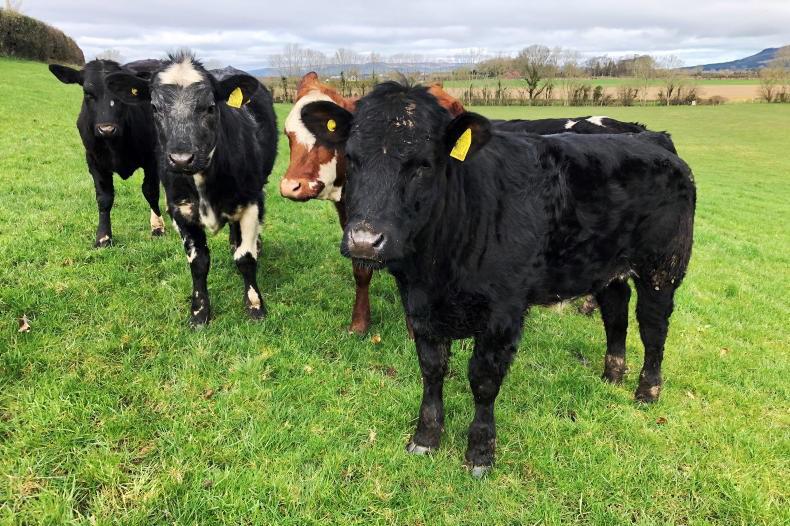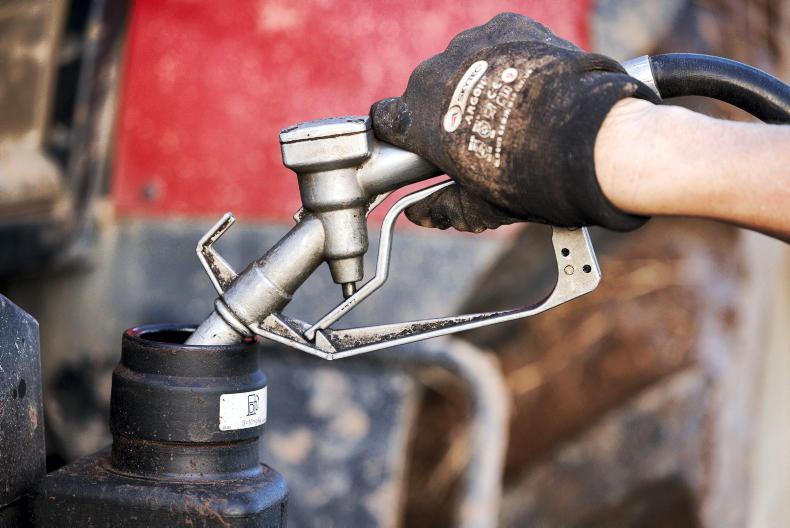Cattle are slowly filtering out to grass and with a relatively dry and mild week ahead, now is the time to get grazing back on track.
Grass growth has been unseasonably low. But as temperatures start to pick up in the weeks ahead, covers will build and meet grazing demand.
Outlined are five tips to getting the spring grazing rotation back on track.
Close off silage ground
Where stock have been grazing since the start of the month, chances are that cattle will have been on silage ground, as these tend to be drier fields.
However, these swards should now be fertilised and closed off for first-cut silage. Swards closed off this week should be ready for harvesting around the second week of June.
Blanket spreading fertiliser
Don't wait until temperatures reach the high teens before spreading fertiliser on grazing swards.
Get nitrogen on to swards in advance of temperatures starting to rise, so that nutrients are available in the soil and ready to drive grass growth.
Waiting for a burst of heat before spreading fertiliser is growing time that is lost.
If swards have not received any nitrogen in the past three weeks, then it is advisable to apply 25 to 30 units/ac of nitrogen in the coming days. Repeat this three weeks later.
On swards that struggle with growth during spring, fertility levels are likely to be low, so opt for a compound NPK fertiliser and sulphur.
Don’t go spreading slurry on grazing ground at this stage unless you are using a trailing shoe, as this method places slurry directly on the soil surface.
With cattle now grazing, spreading slurry using a splash plate will spoil grass. This will delay swards from being grazed, bringing the rotation under pressure.
Make sure cows suckling a calf are covered for tetany when grazing fast-growing lush swards.
Make sure to protect regrowth
Once a paddock has been grazed, make sure to protect the regrowth. Don’t allow cattle to roam back over grazed areas, as bare swards are easily poached.
Grass will start regrowing three days after grazing. Nipping these young shoots off too soon will increase the chance of running out of grass.
Cleaning swards out tight
It is important that swards are grazed as tight as possible in April, although this will depend on ground conditions.
If cattle have to be moved from a paddock before the sward can be cleaned out, make it a priority to get back on to these swards later this month to graze them tight.
This will ensure high-quality grass during May, as growth rates start to surge and covers get ahead of cattle.
Control docks and other weeds early
Where a sward has a problem with weeds, such as docks and thistles, the time to spray is now while weeds are small and still weeks away from producing seeds.
Spraying now when grass covers are low means there will be better chemical contact with weeds, so the spray will be much more effective.
Read more
Five cattle management jobs to complete at turnout
A beginner’s guide to paddock grazing
Cattle are slowly filtering out to grass and with a relatively dry and mild week ahead, now is the time to get grazing back on track.
Grass growth has been unseasonably low. But as temperatures start to pick up in the weeks ahead, covers will build and meet grazing demand.
Outlined are five tips to getting the spring grazing rotation back on track.
Close off silage ground
Where stock have been grazing since the start of the month, chances are that cattle will have been on silage ground, as these tend to be drier fields.
However, these swards should now be fertilised and closed off for first-cut silage. Swards closed off this week should be ready for harvesting around the second week of June.
Blanket spreading fertiliser
Don't wait until temperatures reach the high teens before spreading fertiliser on grazing swards.
Get nitrogen on to swards in advance of temperatures starting to rise, so that nutrients are available in the soil and ready to drive grass growth.
Waiting for a burst of heat before spreading fertiliser is growing time that is lost.
If swards have not received any nitrogen in the past three weeks, then it is advisable to apply 25 to 30 units/ac of nitrogen in the coming days. Repeat this three weeks later.
On swards that struggle with growth during spring, fertility levels are likely to be low, so opt for a compound NPK fertiliser and sulphur.
Don’t go spreading slurry on grazing ground at this stage unless you are using a trailing shoe, as this method places slurry directly on the soil surface.
With cattle now grazing, spreading slurry using a splash plate will spoil grass. This will delay swards from being grazed, bringing the rotation under pressure.
Make sure cows suckling a calf are covered for tetany when grazing fast-growing lush swards.
Make sure to protect regrowth
Once a paddock has been grazed, make sure to protect the regrowth. Don’t allow cattle to roam back over grazed areas, as bare swards are easily poached.
Grass will start regrowing three days after grazing. Nipping these young shoots off too soon will increase the chance of running out of grass.
Cleaning swards out tight
It is important that swards are grazed as tight as possible in April, although this will depend on ground conditions.
If cattle have to be moved from a paddock before the sward can be cleaned out, make it a priority to get back on to these swards later this month to graze them tight.
This will ensure high-quality grass during May, as growth rates start to surge and covers get ahead of cattle.
Control docks and other weeds early
Where a sward has a problem with weeds, such as docks and thistles, the time to spray is now while weeds are small and still weeks away from producing seeds.
Spraying now when grass covers are low means there will be better chemical contact with weeds, so the spray will be much more effective.
Read more
Five cattle management jobs to complete at turnout
A beginner’s guide to paddock grazing










SHARING OPTIONS